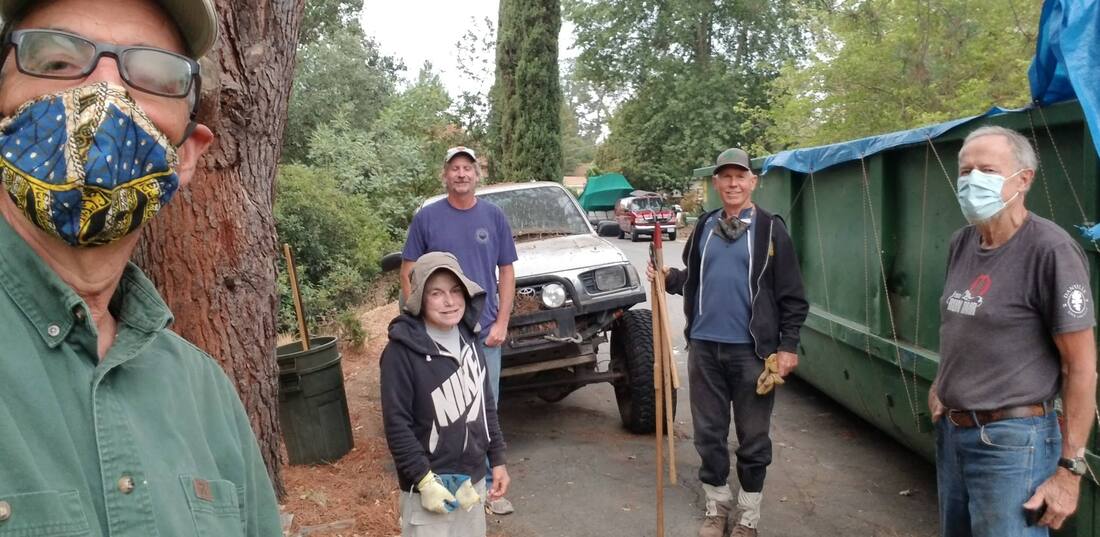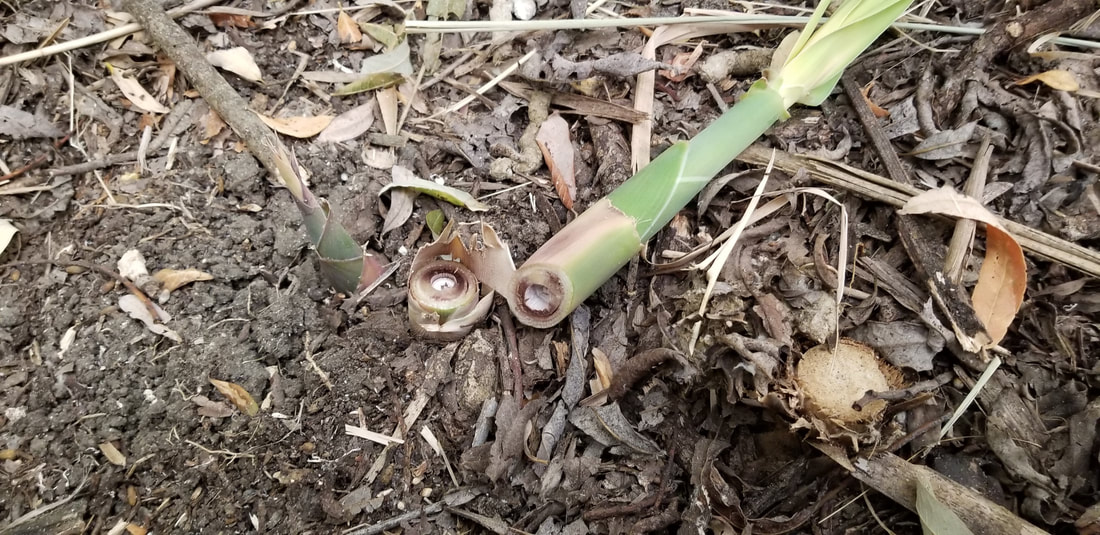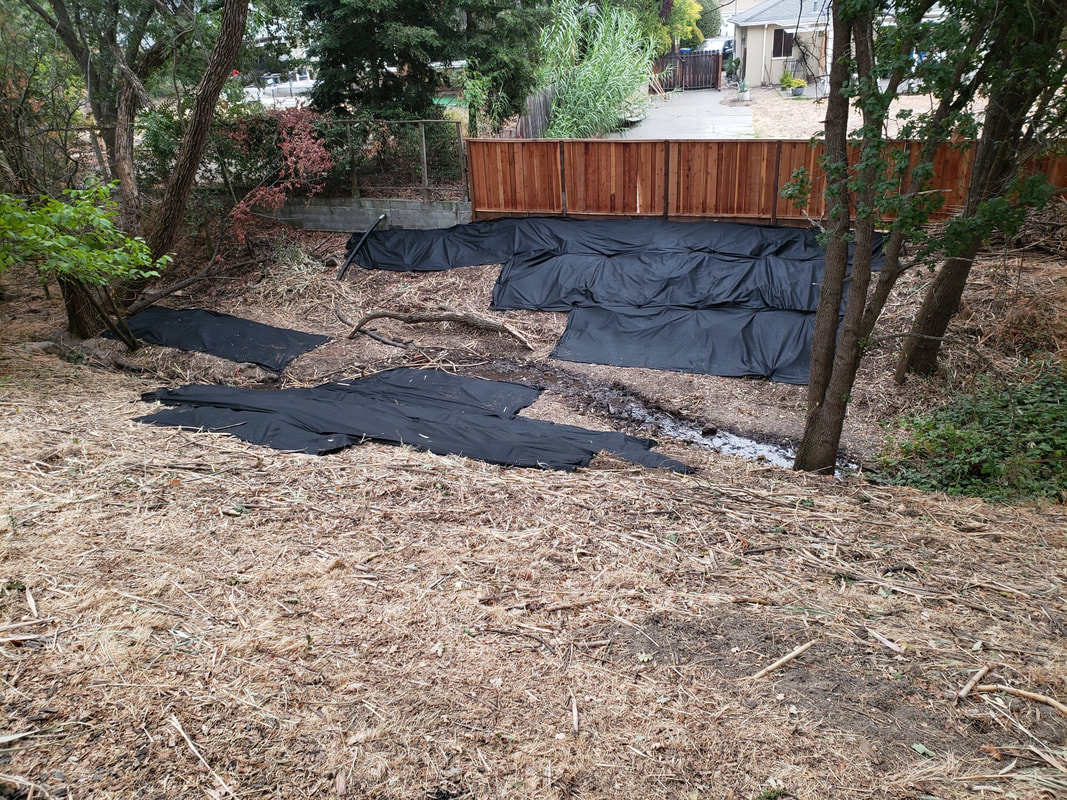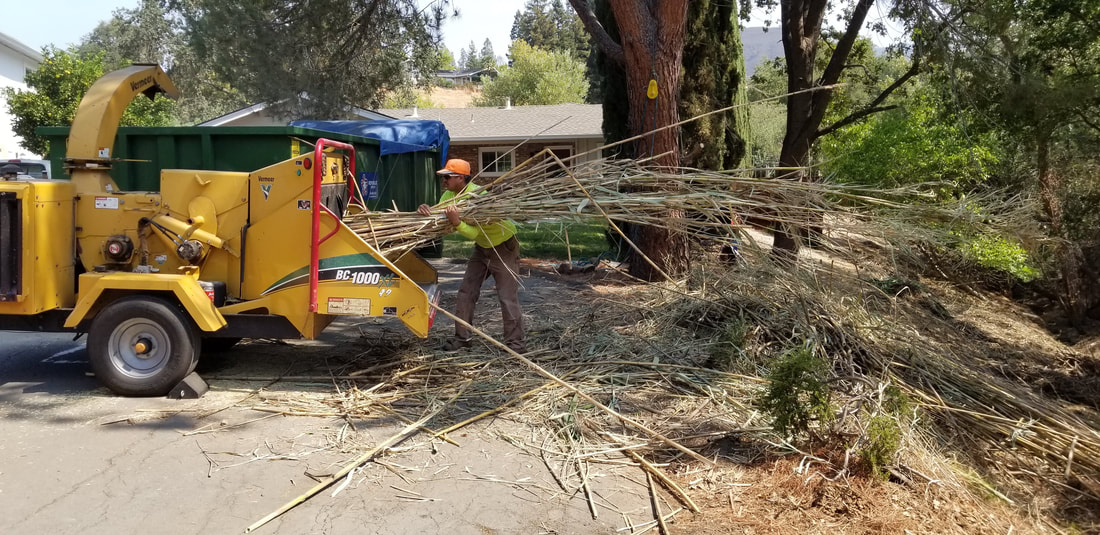 Each Thursday morning, for the last seven weeks, a group of four to six Friends of San Ramon Creek (FSRC) volunteers met in the Whitegate/Cameo area of Danville to remove four stands of Arundo from the Green Valley Creek watershed. Two of the four stands were quite large and very dense. It was hard work but the Arundo has been removed, the rhizomes treated with an herbicide and the rhizome area covered with a geotextile to kill the rhizomes by solarizing (baking) them. There are over 100 stands of Arundo in the San Ramon Creek subwatershed; most of them are on private property. FSRC is working to develop ways to work with property owners to remove these stands. This particular group of stands was chosen because iit provided an opportunity to test an approach to working with property owners and their neighbors and because is one of the furthest upstream stands. Working With Private Property Owners The project started with visits by a volunteer to get permission from the property owners to remove the Arundo. In this case, there were four properties with Arundo; one owned by a Homeowners Association and three owned by homeowners. One of the volunteers met with each of the property owners and explained the issue with Arundo in the creek and described the process to remove it. It took several visits with each property owner to get agreement to the plan for removal, treatment and maintenance. The volunteer then visited with all surrounding property owners to let them know what was happening so they were not surprised. One of the homeowners was insistent that we not use glyphosate. Small Group of Workers Can Socially Distance On July 31 the volunteers started attacking the stands one by one. With these large stands it was possible to keep five or six volunteers working and still stay socially distant. In each case a chain saw was used to quickly cut the stalks. The stalks were moved out of the way and piled into large, orderly, piles nearby. We tried not to use bucket brigades to move the canes but depended on a contractor to haul large piles up the hill and to the dumpster. De-duffing Needed To Treat Stumps When the stalks from a stand had been removed the team went back and de-duffed the stand. The volunteers used small rakes and hands to remove the leaves, dead stalks and other material that covered the ground between the stumps. The goal was to see the ground between the stalks. This effort was significant. It took about ⅓ of the time that it took to remove the stalks just to de-duff it. The duff was piled up near the stand and left to compost in place. Treated Stumps With Weedslayer After de-duffing, the stumps were recut with a chainsaw as close to the ground as practical. Then a volunteer painted each of the cut stumps with a highly concentrated herbicide (50% water, 50% Weedslayer or Roundup custom). Weedslayer Seems To Work On Stumps  Since the stands were treated over a period of six weeks or so and with different herbicides we were able to see the different impact of the herbicides.
 The final part of the treatment was another experiment by FSRC. A geotextile material was cut and laid over the exposed rhizomes and was attached to the ground with long staples. It is hoped that the black material will absorb heat and kill the rhizomes. We are unsure if this technique will work, how long it will take and whether aggressive growth will damage the geotextile. We anticipate leaving the geotextile in place for a year to maximize the effect. Contractor Hauled Stalks and Chipped Into Dumpster  The piles of stalks were huge, maybe six feet around. They would have filled several dumpsters if we had put them in unchipped. In order to minimize the number of dumpsters required FSRC hired a contractor to haul the stalks to a dumpster and chip them into the dumpster. This seemed to reduce the volume needed to be hauled by ¾ or more. The contractor was able to save a lot of labor by dragging the bundles from the staging area near the stand to the dumpster. A rope was cinched around the bundle of stalks; the other end of the rope was tied to a truck and the truck pulled the pile up next to the chipper. For more information about this Arundo removal project contact Mike Anciaux at [email protected].
0 Comments
Your comment will be posted after it is approved.
Leave a Reply. |
Walnut Creek Watershed Council
|
Copyright 2024 Walnut Creek Watershed Council. All Rights Reserved.
Many images courtesy of the Contra Costa Resource Conservation District. |

 RSS Feed
RSS Feed